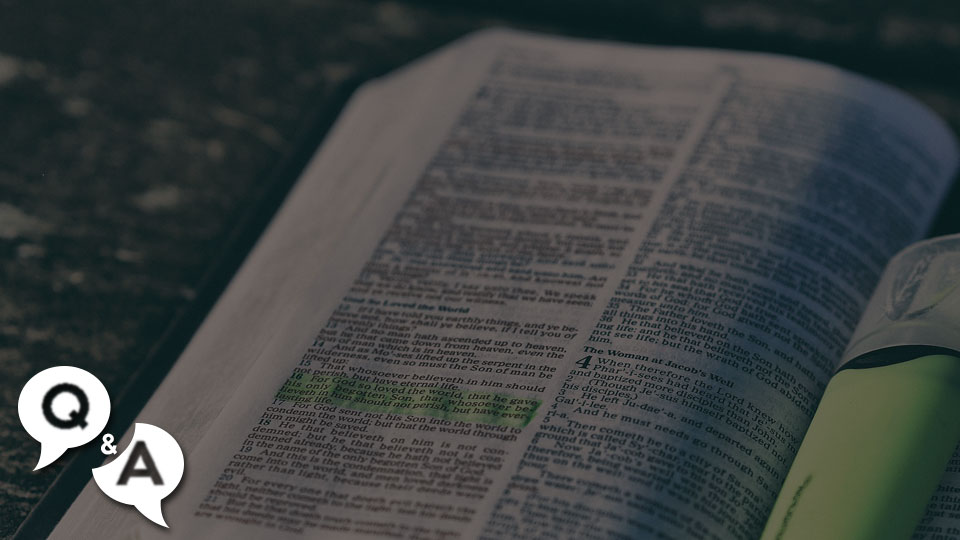Sunday, March 24, 2019
3rd Sunday of Lent
Liturgical Color: Violet
First reading: Exodus 3:1–8a, 13–15
Responsorial Psalm: Psalm 103:1–2, 3–4, 6–7, 8, 11
Second reading: 1 Corinthians 10:1–6, 10–12
Gospel: Luke 13:1–9
This week, we are blessed with doctrinally, theologically and exegetically rich scriptural readings. I won’t pretend to be covering even the majority of the possibilities, but only a small sampling. I invite our Community members to suggest additional interpretations.
First Reading
In the mountains of the southern Sinai Peninsula, a shepherd tends his flock at altitude, where the good grass grows for his charges, avoiding the scorching sun of the desert lower down. Due to the volcanic activity in the region, it was not uncommon to see the vegetation ignite, as here and there, hot gases vented to the surface. What was unusual — indeed, seemingly impossible — was that the bush was not burned up by the fire and reduced to cinder. This latter phenomenon intrigued Moses, a man who had been raised as a prince in the land of Egypt, but having killed a man, he had fled and was now, forty years later, a shepherd far from his birthplace. As he approached the flaming bush, a voice called to him, telling him, “I am the God of your father, the God of Abraham, the God of Isaac, and the God of Jacob. The place on which you are standing is holy ground.” Moses cast himself prone, his face hidden, for he knew that looking upon God would mean instant death.
burning: Fire can be a sign of God’s presence (Exodus 19:18), glory (Exodus 24:17), judgment (Numbers 11:1), and jealous love for his people (Deuteronomy 4:24). • Allegorically, the bush that blazes unharmed teaches the mystery of the Virgin Birth, for the light of divinity within the Virgin was born to a human life without withering the blossom of her virginity (St. Gregory of Nyssa, Life of Moses 2, 21). – Ignatius Catholic Study Bible
The voice speaks of Moses’ people, the Hebrews, who were slaves back in Egypt. God has heard their outcry and has come to earth to rescue them and lead them to a land “flowing with milk and honey,” where they would be free. This shows, in effect, God’s kinship with his chosen people — and with Moses himself, in spite of his estrangement — through his prior covenant with their ancestors, Abraham, Isaac and Jacob.
Why does Moses ask God his name? Because, according to the common belief, to know the name of a person would provide one a certain power over him. It was for this very reason that, thousands of years later, Jesus of Nazareth would ask the name of the demon who was tormenting the man at Gerasa (Mark 5:9), so as to expel that unclean spirit. Here, with Moses, the idea was that, if God was going to send him on a mission, he wanted to be secure in what he was about and not walking into a trap. It was, from his point of view, a necessary precaution.
It seems that Moses was being nudged rather unnecessarily into being the leader of the Hebrews. Why him, and why now, after all these years of exile in the desert and mountains? Why should he go back to Egypt when he was content here? Perhaps the reason lies in the fact that, of all the Hebrew people, he was the only one who had known freedom, who had knowledge of the ways of the desert where his people, once freed, would be spending the next forty years. But Moses, accosted by the Lord in the solitude of the mountains, did not know this. So he would naturally be reluctant to undertake such a mission. Yet the Lord insisted, and in the end, he would go.
Second Reading
The Apostle Paul draws on his rabbinical learning to provide a mystical interpretation of the Exodus and the Israelites’ sojourn in the desert. The signs he mentions are the luminous pillar of cloud to guide the people, the parting of the sea to allow the Israelites to escape the pursuing Egyptian army, the manna God provided to feed the multitude, and the water from the rock to keep them alive in the desert.
An important point to be aware of is the correspondence of the Exodus events with the sacraments of the Church. Paul says that the patriarchs were “our fathers,” the ancestors and forerunners of Christians as well as of Jews, indicating the continuity of the ancient faith. In the same way, the events of the Exodus are types of the Christian sacraments: The cloud = the Holy Spirit; the sea= baptism; baptized into Moses = baptized into Christ; the manna = the Eucharist; the water from the rock = spiritual drink, the Eucharist or the Holy Spirit; the rock as the source of water = Christ as the rock, the source of the Holy Spirit. – Catholic Commentary on Sacred Scripture
Paul urges the Corinthians to learn from the mistakes of Israel. Although the Israelites received blessings comparable to Baptism (Red Sea) and the Eucharist (manna and water), they perished for experimenting with idolatry. With this in mind, the Corinthians, who have received superior blessings in the sacraments, must guard against presumption and over-confidence in the face of anything connected with idolatry (e.g., idol foods, 1 Corinthians 8:10). Paul intensifies this warning by stressing how all the Israelites were delivered from bondage (10:1-4) and yet most of them were destroyed in God’s wrath for serving other gods (10:5). – Ignatius Catholic Study Bible
This results in a warning and instruction for us today. None of the original Hebrews who left Egypt was allowed to enter the Promised Land except the three men whom God deemed worthy by their perseverance in faith.
warnings: Or, “types”. The dangers and judgments that Israel experienced between the Red Sea and the Promised Land show us that the Christian life is a probationary period of testing that stretches between our Baptism and our final salvation. Unless we fight the temptations that badger us along the way, we will fail to reach our heavenly homeland, just as many of the Exodus generation perished without crossing over into Canaan. The premise behind this Exodus typology is that the Church relives the experiences of Israel at a spiritual level (Catechism of the Catholic Church 128–30, 1094).
for our instruction: The Old Testament remains a source of spiritual teaching and encouragement even for New Testament believers (Romans 15:4). This is because both Testaments bear witness to a unified plan of salvation that began with creation, advanced through the history of Israel, and climaxed with the redeeming mission of the Messiah. – Ignatius Catholic Study Bible
Gospel
Two episodes about the urgent need for repentance. Action, not mere “assent,” is what he requires.
Our Lord used current events in his teaching. The Galileans referred to here may be the same as mentioned in the Acts of the Apostles (5:37). The episode was fairly typical of the times Jesus lived in, with Pilate sternly suppressing any sign of civil unrest. – Navarre Bible Commentary
The fig tree which produces no fruit is a further example. God is patient, but if the tree does not bear fruit after a sufficient time of forbearance, he will have it cut down, as Jesus’ forerunner, John the Baptist, had said: “Every tree that does not produce good fruit will be cut down and thrown into the fire” (Luke 3:9). Isn’t this the fundamental reason why the Church established the penitential seasons of Advent and Lent: to urge us to do penance for our sins, that we may be saved?








